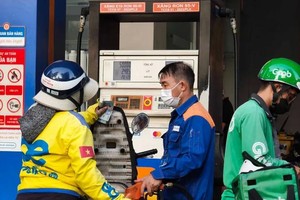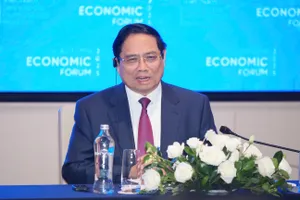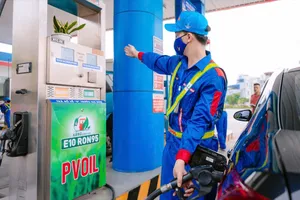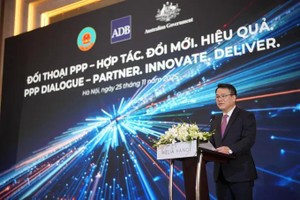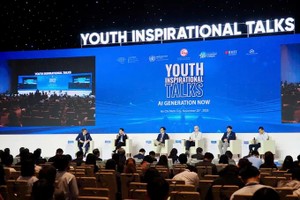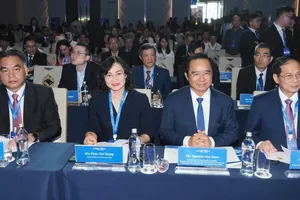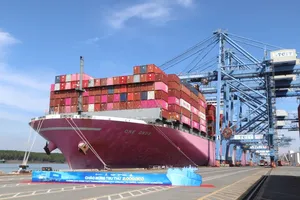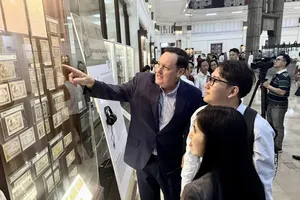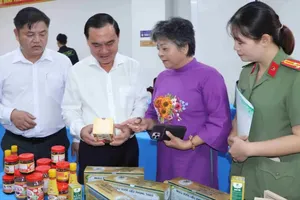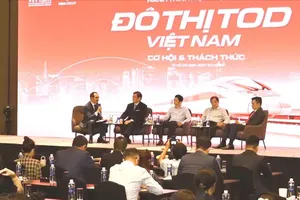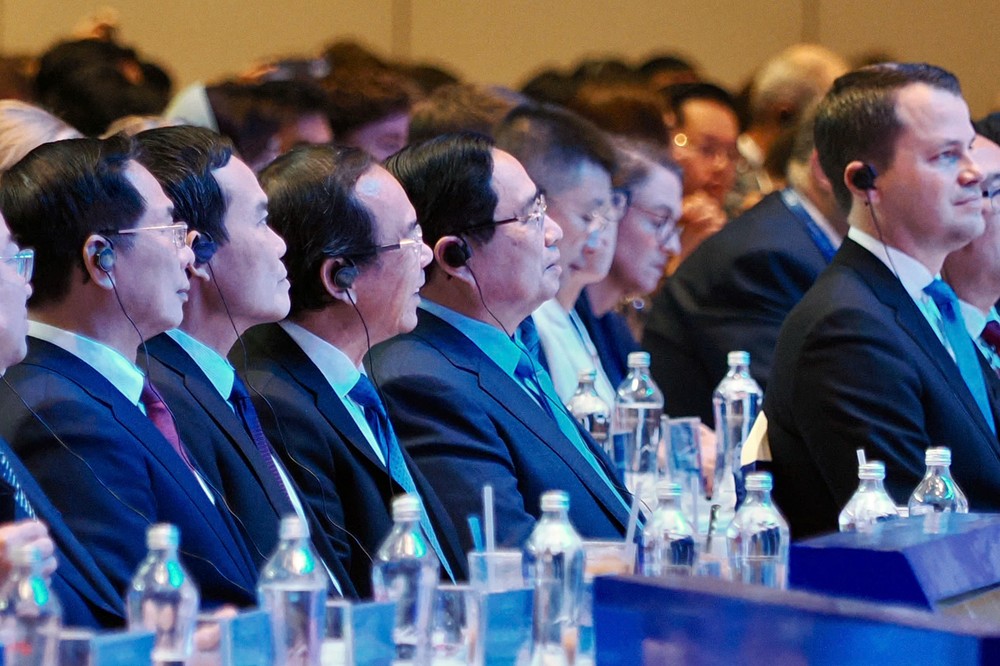
Hosted by the HCMC People’s Committee in coordination with the World Economic Forum (WEF), the forum gathers senior leaders, global experts, and more than 500 enterprises to address Vietnam’s transition toward a green–digital economy and its aspirations for an intelligent, sustainable development model.
Prime Minister Pham Minh Chinh; Deputy Prime Minister Bui Thanh Son; Mr. Nguyen Van Nen, Standing Member of the Document Subcommittee for the 14th National Party Congress; Mr. Nguyen Thanh Nghi, Chairman of the Central Policy and Strategy Commission; and Mr. Phan Van Mai, Chairman of the National Assembly’s Committee for Economic and Financial Affairs, attended the plenary. The event also drew ministry leaders, diplomats, researchers, and representatives from over 500 enterprises specializing in high technology and innovation.
HCMC’s delegation included Secretary of the HCMC Party Committee Tran Luu Quang and Chairman of the HCMC People’s Committee Nguyen Van Duoc. International participation was similarly extensive, with 70 delegations from innovation centers and major corporations, six delegations from international ministries, eight from foreign local governments, and representatives from major organizations, such as the UN, IMF, ADB, and ten global Centers for the Fourth Industrial Revolution (C4IR).
Delivering the opening keynote, WEF Managing Director Stephan Mergenthaler addressed the central theme: the transition toward the intelligent economy—its opportunities and inherent challenges. He thanked the Vietnamese Government, HCMC authorities, and the HCMC C4IR for co-organizing the highly consequential event. Vietnam, he said, stands at “a pivotal moment to enter a transformative new phase of development.”

According to him, Vietnam’s economic trajectory mirrors its earlier period of market opening: dynamic, adaptive, and now poised for a deeper transition as the intelligent economy takes shape. If productivity during the industrial era depended on labor and capital, today it is driven by data, artificial intelligence (AI), and digital collaboration ecosystems.
“AI is no longer a technology of the future—it is actively shaping current productivity and business models,” he stressed.
WEF research shows that 86 percent of global enterprises expect AI to fundamentally alter their operations this decade. AI may influence 22 percent of jobs worldwide, eliminating an estimated 92 million roles while creating around 170 million new ones—a net positive outcome only if the transition is properly managed with an emphasis on workforce reskilling and lifelong learning.
Mr. Stephan Mergenthaler outlined three major shifts defining the intelligent economy, emphasizing that businesses are moving from selling products to delivering outcomes such as performance, energy savings, or emissions reductions. He noted that standalone firms are giving way to interconnected ecosystems in which data and responsibilities are shared across multiple players. He also stressed that adopting AI is no longer just a technological upgrade but a catalyst for organizational reinvention, requiring companies to rethink their operations, governance, workflows, and corporate culture.

He cited broad opportunities for AI: predictive maintenance and waste reduction in manufacturing; diagnostics and treatment coordination in healthcare; fraud prevention and personalized advice in finance. Yet benefits remain unevenly distributed: large corporations are advancing quickly, while small firms and public agencies struggle with infrastructure, data access, and implementation capacity.
To fully realize the value of the intelligent economy, he said, nations must invest in both digital infrastructure (data, computing, connectivity) and human infrastructure (skills, safety, inclusion). AI, he concluded, is not merely a technology but “a mirror reflecting society’s choices about development and the future.”
“The challenge is not to build machines that learn, but to build a society that adapts,” he remarked.
Vietnam emerges as a hub for the next production generation
Mr. Brand Cheng, Chairman of Foxconn Industrial Internet, delivered a compelling presentation on smart manufacturing and global supply chains. Foxconn continues expanding investment in Vietnam, he said, because it sees a proactive and stable policy environment and consistent Government support.

He highlighted Vietnam’s dramatic export growth—from US$48.6 billion in 2007 to $391 billion in 2025—with about 35 percent now derived from high-tech industries, especially electronics. FDI inflows have climbed from $20 billion to $31.5 billion over the same period, while per-capita GDP rose from $926 to roughly $5,000. These achievements reflect strong market-opening policies, continual improvements to the investment climate, and clear industrial-development orientations.
Mr. Brand Cheng emphasized three “open-door accelerators” enabling Vietnam’s rise: expanded international trade, strategic partnerships with global technology firms, and long-term cooperation strategies for 2025–2033. Manufacturing remains a pillar of the economy: since 2012, industry has accounted for more than 20 percent of GDP. In the first half of 2025, GDP grew 7.5 percent—among the world’s highest. Electronic exports alone surged 48 percent between January and October 2025, reaching $87.3 billion.
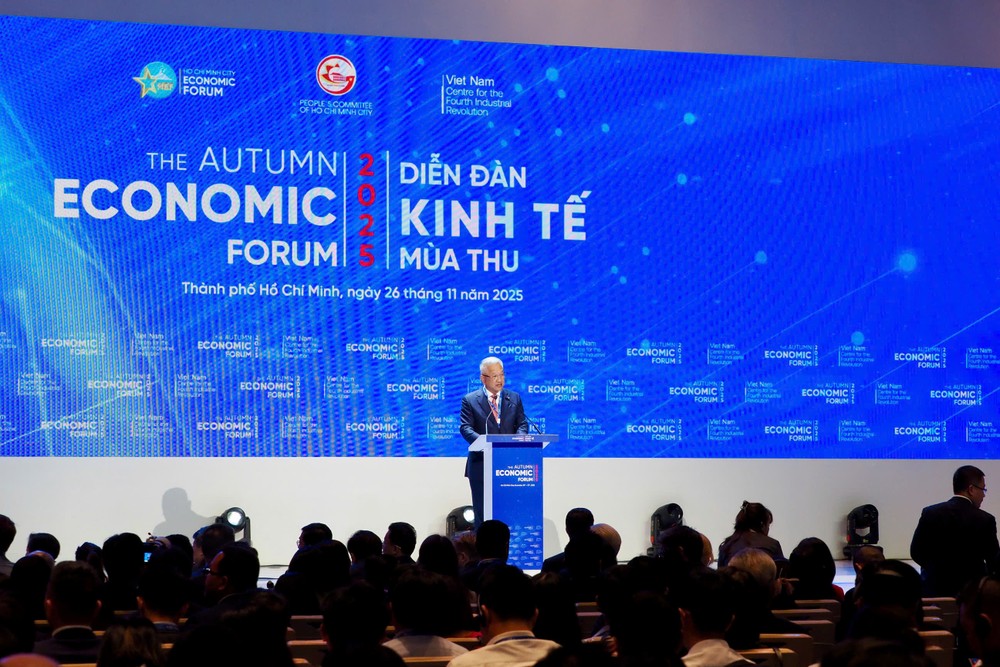
Foxconn is now entering the stage of “using AI to produce AI.” The group deploys AI across design, manufacturing, and operations, creating next-generation automated lines. Partnerships with leading firms like NVIDIA are enabling advanced production models and bolstering Vietnam’s attractiveness for semiconductors and data centers. In October 2024, Foxconn Vietnam received WEF’s industrial certification—an indicator of the country’s advanced production capabilities.
He noted that Vietnam is rapidly emerging as a global production base for AI devices, high-speed network systems, data centers, and new-generation components—a critical development as global supply chains restructure along multipolar technological, logistics, and digital capabilities.
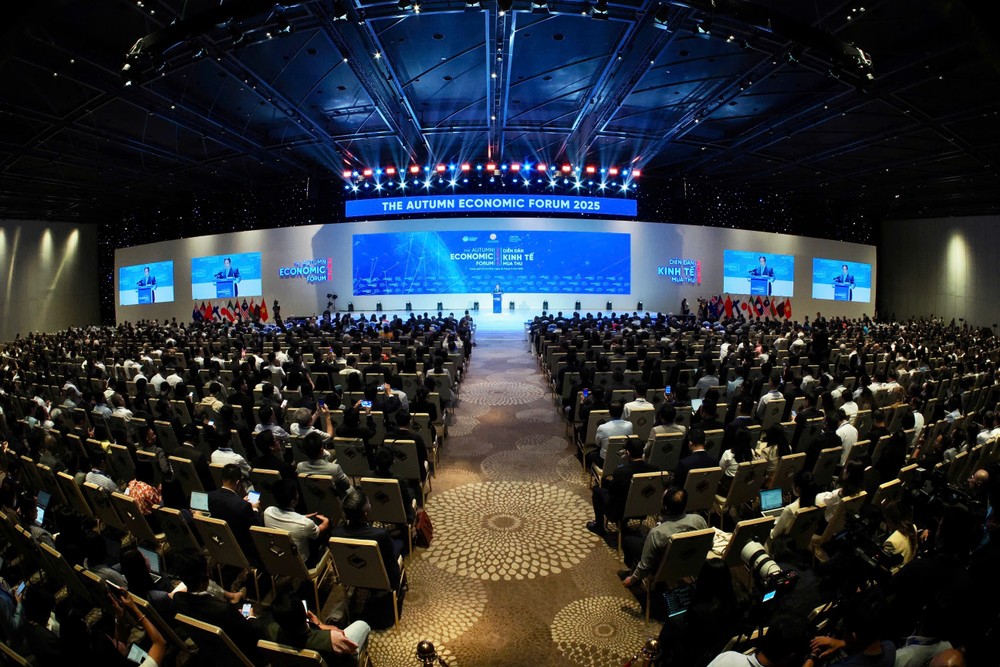
To sustain momentum, Vietnam must prioritize human-resource development, sustainable materials and components, and increased localization. AI, he said, only unleashes full value when integrated across the entire value chain, from design to logistics. This is why Foxconn continues investing heavily in automation, smart logistics, and AI-driven value-addition centers in Vietnam.
Closing his address, Mr. Brand Cheng affirmed Foxconn’s long-term commitment: “For us, the answer has always been Vietnam, Vietnam, and Vietnam.”
The UN backs Vietnam’s integrated policy architecture
UN Resident Coordinator Pauline Tamesis thanked the Government, HCMC authorities, and C4IR for creating a timely platform to examine green transformation in the digital age. She quoted the UN Secretary-General: “The future is built on the cloud, powered by the sun and wind,” highlighting the intrinsic link between digitalization and decarbonization.
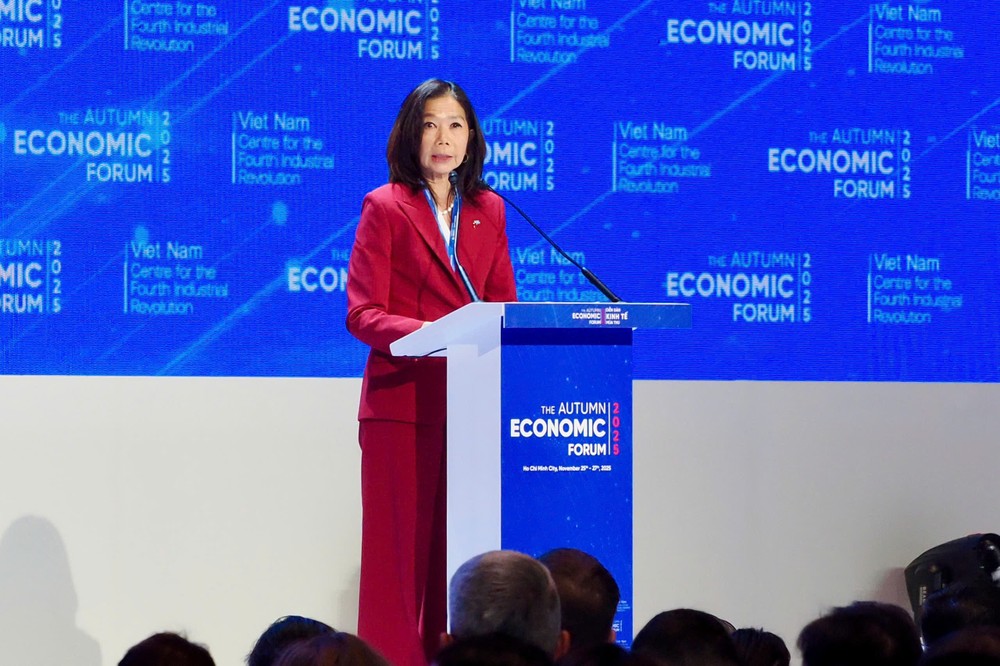
Global investment in clean energy surpassed $2 trillion last year, while the digital economy continues to expand rapidly as billions shop, entertain, and connect online. These parallel transitions, she said, must be integrated into a mutually reinforcing ecosystem. Digital technologies—AI, big data, IoT—optimize energy systems, resource management, and climate verification, while green transformation ensures clean energy foundations for sustainable digital growth.
She outlined three global megatrends: AI and data accelerating climate action; energy systems shifting toward multi-dimensional, intelligent models; and the world confronting the risk of a “dirty digital transition” driven by emissions-intensive tech infrastructure.
UN analytical models indicate that investment in renewable energy, green infrastructure, ICT, and human development yields substantial benefits for Vietnam in growth, poverty reduction, and resilience. The UN, she affirmed, will continue supporting Vietnam in building integrated policy frameworks and mobilizing resources to leverage green–digital transformation as a driver of national competitiveness.
Entering the “great transformation” of urban governance
Professor Young Sup Joo, Honorary Professor at Seoul National University and former Korean Minister for SMEs and Startups, presented insights on megacity governance and shared responsibility. Vietnam, he argued, is entering “the pivotal moment of the great transformation”—an era where urban centers must redefine development goals to become global megacities in the near future.
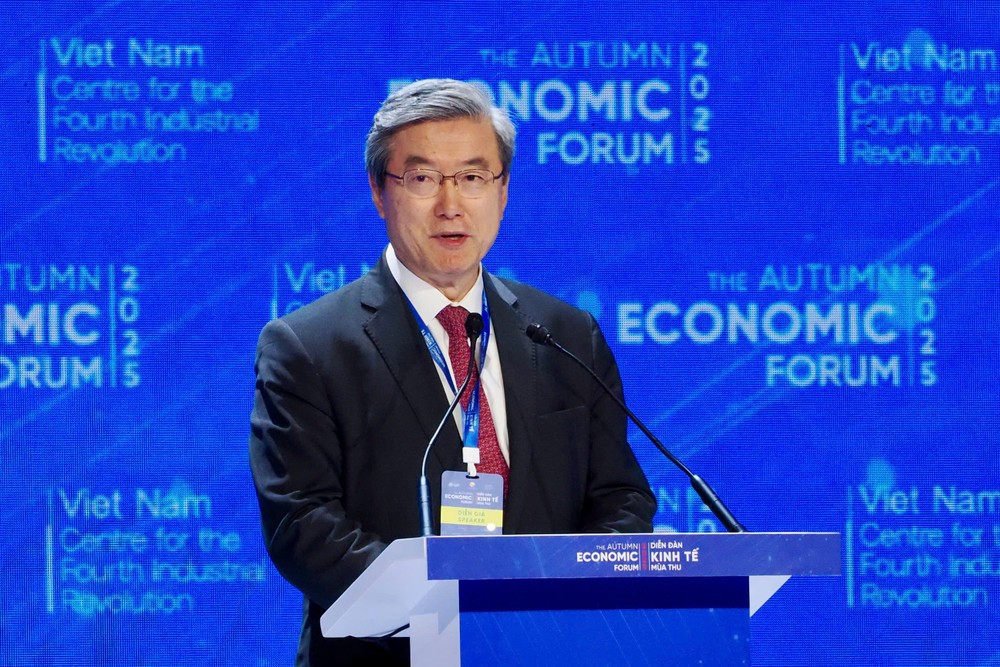
He identified three epochal shifts: the AI-driven industrial revolution; the green transition to counter the climate crisis; and a “civilizational transition” led by Gen Y and Gen Z demanding new human-centered value systems. The common denominator is sustainability—environmental, social, and human.
Professor Young Sup Joo cautioned governments against confusing “goals” with “tools.” AI, data, and technology are not ends, but means to ensure human security—from food and energy security to public health, technological sovereignty, and political stability. Cities must therefore adopt a purpose-oriented development model rather than chasing technology for its own sake.

A true “AI city of the future,” he said, requires consensus among governments, businesses, and citizens on shared objectives: improving quality of life, ensuring social equity, and advancing sustainable development. He outlined five pillars cities must prepare: the future of public services; digitalization and automation; education systems; energy-environment transitions; and finance-industry transformations—all interconnected by unified urban data systems, AI platforms, and transparent governance.
Successful cities will treat AI as a tool to expand human capability, not replace it, and will build cohesive ecosystems linking data, technology, education, and governance with broad societal support.
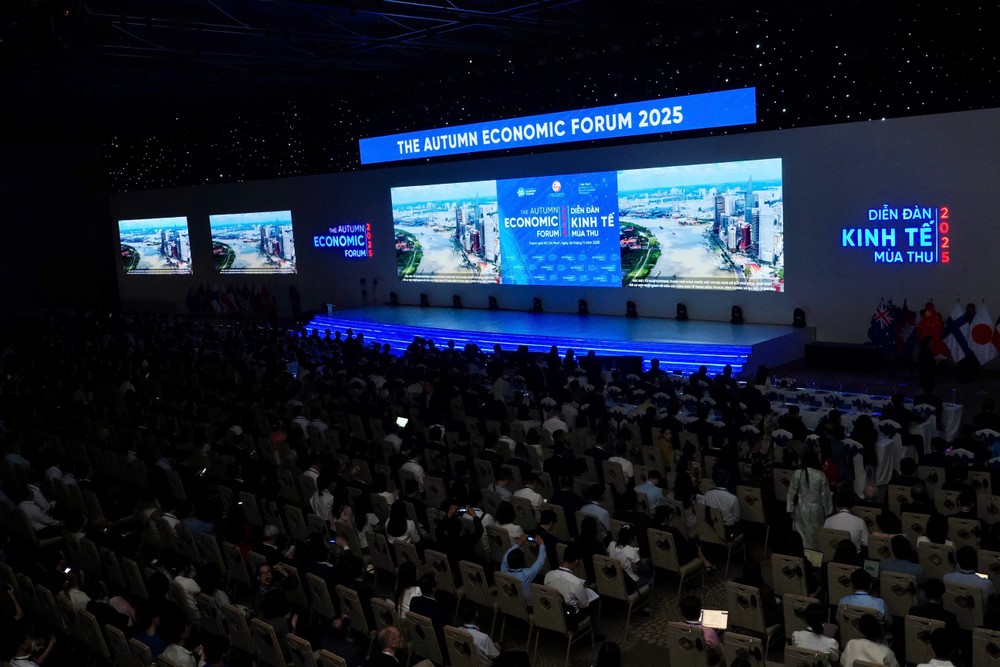
HCMC pursues a greener, smarter, more sustainable future
Presenting Vietnam’s perspective, Mr. Pham Binh An, Deputy Director of the HCMC Institute for Development Studies, said the country is entering a new development era marked by intertwined opportunities and challenges. Vietnam faces three major risks: the middle-income trap, population aging, and climate change—factors that demand a decisive green transition.
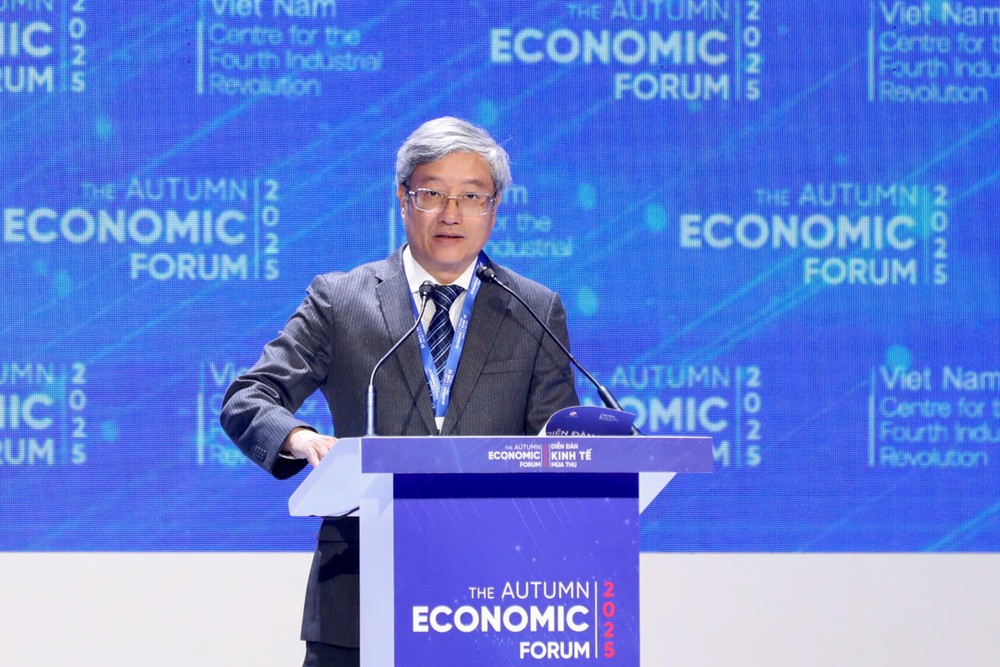
Vietnam aims to become a high-income country by 2045 and achieve Net Zero by 2050. To this end, the nation has institutionalized numerous commitments and domestic policies: the Green Growth Strategy, updated NDCs, and implementation of the revised Law on Environmental Protection.
Green transformation is being advanced in key sectors: renewable energy (under National Power Development Plan VIII), low-emissions agriculture, green transport and logistics, circular industry, sustainable urban development, and green consumption. To support this, Vietnam must refine green project taxonomies, operationalize the carbon market, standardize the monitoring, reporting and verification (MRV) systems, and build appropriate tax and financial mechanisms.
For HCMC, the post-merger expansion of its development space allows the city to pursue a multi-center urban model defined by three regions, three corridors, and five development pillars. Green and digital transformation serve as central drivers. The city is developing a flagship green program with ten pillars prioritizing energy, transport–logistics, green industry, urban infrastructure, services, and urban agriculture. Parallel efforts are building a dual-data ecosystem, promoting green-digital citizenship, and shaping a two-tier green governance model.
HCMC, he stressed, will remain steadfast in co-creating a “greener, smarter, and more sustainable future” under the collective principle: a facilitative State, pioneering enterprises, engaged communities, and committed international partners.

